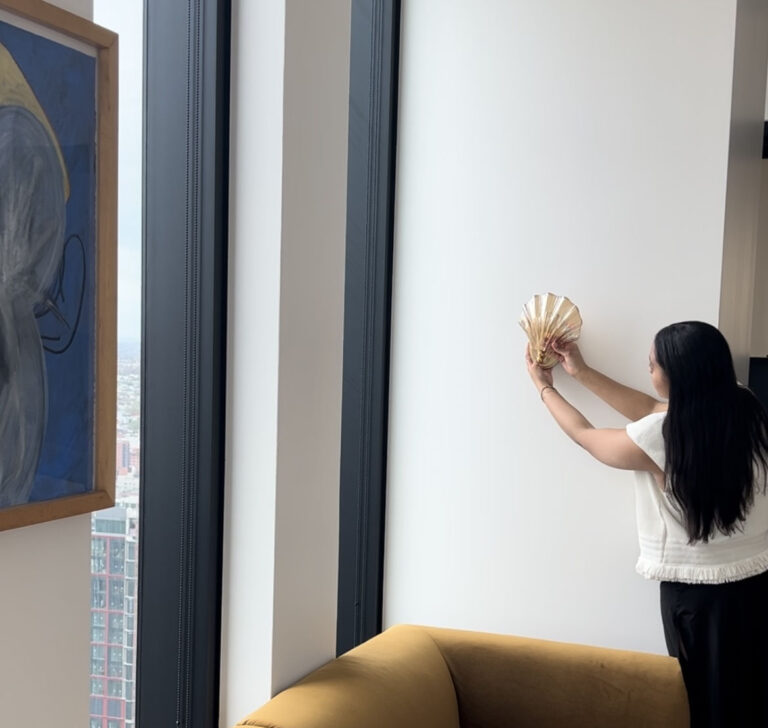My grandmother tells a story of taking 6-year-old me to Lord & Taylor to buy a winter coat, where I promptly chose an ankle-length black wool piece with fur cuffs: “One day I will live on 5th Avenue in an all-white apartment,” I proclaimed, my child mind already reaching for an inspired, aesthetic life by way of this thing in front me.
More than most, I spend an excessive amount of time and emotional energy considering (and reconsidering) the things I buy, own, and donate. Like many girls who dreamed of moving to New York, I had adolescent visions of working for Vogue, cultivating an identity as a tastemaker that would take me to the MET Gala. Nearing the end of my twenties, I am examining the quest of “good taste”, and my relentless pursuit of a life filled with beautiful things.
Where is the value in having good taste? Why does it matter to me?
I grew up with very poised grandmothers who viewed an intentional, authoritative approach to what you wore, what you owned, and where you lived as a demonstration of respect — for yourself and for others. It is a value system founded in the belief that you get back what you put out into the world: to experience beauty you must embody beauty. For my black grandmothers, living beautifully was an act of reclamation of identity and active resistance to a societal model that diminished their beauty and their worth.
bell hooks tells us some of the origins of this belief system, where following the end of the seventies, “it was popularly accepted that material goods and the acquisition of power… was more attainable than freedom…black people were urged to see consumption as the way to define success and well-being.” Reading Rock My Soul: Black People and Self-Esteem has transformed my understanding of myself, in that as a black bi-racial woman the politics of aesthetics have been deeply intertwined with my existence in society even before I was “thought of” (as my grandmother used to say). hooks later connects the need for consumption to the black body, writing:
“The most obvious internalization of shame that impacted on the self-esteem of black folks historically and continues to the present day is the shame about appearance, skin color, body shape, and hair texture.”
Being beautiful, and living beautifully is a form of social armor. This exploration began with me as an adolescent (like most) just trying to fit in, owning the same things everyone else seemed to have. But over time, it became something else and transformed into something empowering as I started to dive more deeply into my individual preferences.
I don’t think this principle applies only to black people, or even just people of color. In New York and other cosmopolitan cities, taste is a form of social capital. Walking down any street in the West Village you will surely pass bands of cohesive-looking people that look more like dance troupes than friend groups — some derivative of Clean Girl (leather blazers galore!) this week termed as “Espresso Girl” aesthetic. Trends masquerading as a shortcut to taste. Why? Being seen as having bad taste in New York is kind of like a social death sentence.
“The silver lining in the complex politics of good taste is the opportunity to find yourself.”
There’s a lot more to say here, and I am not prepared to write about all of the ways this is tragic today. But this exploration also has a kind of optimism embedded within it: the opportunity to find our taste. Lots of practical media has come out recently on what taste is and how to find yours, but I will say that, to me, the silver lining in the complex politics of good taste is the opportunity to find yourself. Call me naive, but if I imagine a world where people are fully expressed, showing up as living in what they love, it’s a utopian vision.
Thus, cultivating my taste — and the complicated consumption associated in that pursuit — has never been superficial to me, but rather fundamental to the crafting of my own identity, my sense of safety and opportunity in the world, and ultimately a means of connecting more authentically with myself and those around me. I’ll offer the below framework.
Three opportunities of Taste:
- Taste is a tool. Taste is not meant to be developed for the sake of itself but for the sake of our self-actualization. Our tastes will surely overlap, but it in truth should be highly individual. Your taste is the things you love without abandon. They feel obvious not just to your mind, or eye, but to your body. And thus a tool for knowing yourself.
- Taste is brave. Because individuality is vulnerable. We are also always changing, necessitating that our taste evolves with us. Taste is not about how elevated or aesthetic our lives can be, but how deep within ourselves can we dig to find the courage that dares to show up in the world boldly, and as we really are.
- Taste is a bid for connection. Many of the conversations I have about taste in New York are underpinned by othering: those with taste, and those without. Part of the tragedy of this is that true taste harbors so much — infinite — potential for individuality and humanity. The true, unbridled joy of a thing becoming an external manifestation of our internal world, and the opportunity that it creates to connect us more deeply to people looking for the uniqueness we have to offer.
It is tempting to view cultivating taste as a superficial, even vain, pursuit. It is also tempting – indulgent — to buy / wear / own trendy things as it can create an immediate sense of belonging. There’s a need for that kind of relief. But I crave a world where everyone is willing to show up as the fully expressed versions of themselves, willing to (literally) wear their heart on their sleeve.

Just recently, I picked up a jacket I didn’t buy, a bejeweled jean thing at a Ross in an LA strip mall. Yes, it looked like it cost $19, and I bejeweled it with gemstones from Michael’s. I wasn’t drawn to it because of the craftsmanship. But I texted a photo to my best friend with no caption — as a kind of offering — to share with him the girl inside me who kinda dug it.


















